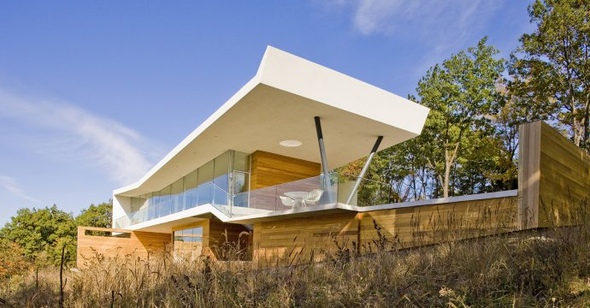An Architect’s Restroom Revolution
April 27, 2017

ARCHITECT Joel Sanders wants to reinvent the public restroom.
Sanders presented his vision in a recent interview with the architecture critic of The Philadelphia Inquirer. His brave, new designs eliminate old-fashioned and oppressive sex-segregation in lavatories.
Warning: Please approach Mr. Sanders’ words with a mirror. His frequent suggestions that human beings were psychologically sick because they believed in sex-segregated accommodations for this basic process reveal the sickness of a certain distressingly common state of mind — a mind haughty enough to deem universal public opinion wrong.
From the interview:
I’m interested in bathrooms, and have been for the past 20 years, because [I want to make loads of money] they exemplify the way in which everyday common spaces reflect our cultural values. The bathroom is where social, political, psychological, technological, and legal forces all converge. Bathrooms tend to be the most expensive room per square foot [loads of money], yet we tend to take them for granted. The bathroom is just one way designed environments shape how the body interacts with space, yet architects often forget that what we’re supposed to be designing for the human body. It’s perhaps the most intimate architectural space we inhabit.
His plan?
We advocate a multi-stall solution that treats the public restroom as one single open space. No longer will gender non-conforming people have to choose between two unacceptable options .
Instead, the gender conforming will have only one unacceptable option.
It’s a communal space based on the model of the agora, which encourages mixing.
Ancient Greece was one of the most sex-segregated societies in history. Nice trick though to conjure a traditionalist, relatively appealing society when you are planning to introduce some modern, soulless form of perversion. Rather than the agora, Mr. Sanders design is more reminiscent of the cow barn.
Animals relieve themselves with no concern for sex differences or hang-ups about modesty. In this age of mass herding, our restrooms will be even more cattle-like as well.
Mr. Sanders again:
At home, men and women share bathrooms all the time. What seems so radical in public places isn’t given a second thought at home.
Could it be that at home men and women live with those whom they know and trust? We do not know and trust the people with whom we share public restrooms. Mr. Sanders himself could be in the next stall.
There we go without our hang-ups again. The sex-segregated restroom is a manifestation of sick social anxiety and intolerance, the Yale-educated Sanders writes in his masterpiece, “Stalled: Gender Neutral Public Bathrooms:”
The current backlash against trans* people using public toilets that match their gender identity reflects a longer history of public toilets, which themselves date to early eighteenth-century Paris 3, and registers social anxieties triggered by the threat of various marginalized groups entering into normative society.
The real threat is non-marginalized architects. He continues:
Previous debates were sparked by the introduction of the women’s room to accommodate female participation in the paid workforce, the fight to abolish “colored” bathrooms by the civil rights movement, the furor over “unisex” toilets that helped derail passage of the Equal Rights Amendment, the fear of contamination posed by gay men using public lavatories during the AIDS crisis, and pressure to make bathrooms accessible to the disabled.
Never mind that the introduction of the women’s room in the workforce was never a serious problem, nor did men ever in significant numbers wish to deprive women of the opportunity to relieve themselves. Never mind that the fight to abolish “colored” restrooms has nothing to do with the effort to remove this most basic of physical distinctions and that cultural revolutionaries shamelessly exploit discrimination against blacks to push their cons. There is no such thing as “gender neutrality” in the bathroom partly because there everyone uses the distinctive organs that distinguish the sexes — and engages in an activity that all civilized societies prefer to remain private along traditional sex lines.
And “gay” men do indeed, Mr. Sanders, pose a risk in some bathrooms, as has been well-documented. Not every man wants to be propositioned. “The pressure to make bathrooms accessible to the disabled” has always been first and foremost a practical and economic problem, not a question of excluding “marginalized groups.”
He continues:
In each instance, the public restroom stages the transformation of an abstract concern into a tangible threat, by virtue of it being a physical space in which so-called normal citizens are brought into intimate physical proximity with precisely those presumably nonnormal [sic] people whose expulsion from or invisibilization within the body politic underpins and enables our society’s norms of embodied personhood.
If only we could invisibilize “nonnormal” architects in the body politic. One can only dream.
He writes:
[W]e reframe the assumptions that undergird the necessity of sex-segregated public toilets and advocate for gender-neutral facilities instead. Our assessment of the situationdoes not diminish the very real and legitimate dangers that have been measured in reliable studies documenting the incidents of discomfort, harassment, and assaults experienced by transgender people, as well as cisgender women, children, and even men in public bathrooms. Instead, our objective is to shift the terms of the argument, recognizing that safety is one symptom of a larger dilemma posed when groups that mainstream society considers abnormal or deviant clamor for nonprejudicial access to public space. The future of gender-neutral bathroom design depends on reframing the argument, getting beyond problematic ideological misconceptions and prejudices that still haunt our thinking.
A woman who wants to relieve herself without a man in the next stall — or nightmarishly in her own stall — is, you see, a troubled, haunted person. Nothing has been “reframed” here. Mr. Sanders has applied a stigma to the perfectly normal.
There is a very significant hygienic reason why there are urinals in male restrooms, and why women prefer not to use toilets used by unknown males. In Sanders designs, we see men and women using the same stalls, and presumably, though he does not say, the same toilets. Every woman will have to carry a can of Lysol and sponges. But at least she will be liberated from social anxieties.
Unfortunately, very old-fashioned women do not feel safe walking into a space where there are private stalls and unknown men. Mr. Sanders didn’t say, but apparently they should kick open each stall first:
As for privacy, Sanders offers niches for the sort of privacy one might offer to a cow.
The truth is, there is no such thing and never will be any such thing as “gender neutrality” in the bathroom. That’s the bottom line.
This is a massive hoax. The purpose of the new restroom is not to serve better the basic functions for which the bathroom is intended but to accelerate social change and make sure that even when human cattle are relieving themselves they do not indulge in private and futile fantasies of a more beautiful and normal society, a place where women are women and men are men.
Talmudic cultural revolutionaries with their relentlessly coercive messianism push social destruction, including most of all the inversion of the sexes, and then profit from it. Enormous profits will likely be involved in redesigning public restrooms.
In the end, if the public goes along with it, this nation will prove once again that it is not worthy of the marvels of modern plumbing.
It’s not enough for Sanders to spread his ugly, modernist buildings (see below) across the landscape.

He wants to make sure one of the most fundamental and simple institutions — the public restroom — becomes uncomfortable, unsafe and a projection of his own twisted, messianic ego.



